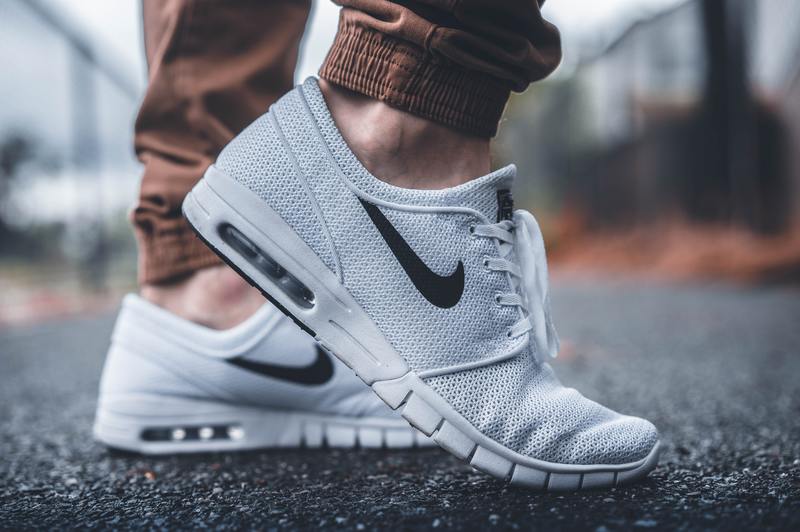Maybe, you started your day with the sight of furry circular spots on your wet shoes; now you are out here wondering what causes mold on shoes. For starters, molds can thrive anywhere as long as the environment provides the level of moisture and humidity that it needs.
However, mold growth on shoes might be more than those two common breeding grounds. As such, this article will guide you in determining the factors that lead to mold-infested shoes.

Spotting The Molds
Of course, you must first have the basic knowledge to identify what a mold is.
For starters, it belongs to the kingdom of fungi and usually grows in places such as soil and plants. This fact is why it typically smells musty or earthy, almost like a decaying matter.
In terms of appearance, it comes in circular shapes with a furry texture. It can also appear as a black stain or shades of orange, white, green, or brown.
The most toxic one, as shown by the media, is the black one. For more information about its color and toxicity, this article on identifying black mold may give you an easy walkthrough.
If you are dealing with a green mold and need a helpful guide on how to remove it, here is a handy remediation guide for green mold.
Regardless of color, shape, and texture, all molds can be dangerous to one’s health to a certain degree. Mold remediation professionals highly recommend not to proceed with mold removal if it can be detrimental to your health.
However, if you think you are healthy enough to deal with molds, do so by following safety precautions. Clad yourself in gloves, goggles, N-95 masks, and P-100 respiratory protection.
Make sure to do this whether you are immunocompromised or not.
Mold Causes On Shoes
Before the repair, try to dig in first on why molds grow on shoes. Shoes are susceptible to mildew. Here are the reasons why.
1. Moist shoe areas
If you got your shoes heavily drenched on a rainy evening, expect to be greeted with an unpleasant smell as mold gradually builds its colonies on your footwear. Molds can accumulate in the presence of wet insoles and other damp areas of your shoes.
The insoles of shoes can also be damp when the feet experience perspiration. So, after using your gym shoes, make sure to put them in an environment with good access to airflow for them to naturally dry and avoid mold contamination.
The same goes with the outer parts of the shoes that may have encountered dirt, dust, and other potential contaminants. So, wherever you go, make sure to clean your shoes and dry them thoroughly before using them again.
2. Filthy closets
It is also possible that molds have already grown inside the closet where you usually store your shoes. Check it regularly and make sure to get rid of any visible mold to prevent it from possibly infesting your shoes.
To avoid mold growth in the first place, keep the closet clean by not leaving any dirty clothes or shoes. Remind yourself to throw all plastics, especially the dry-cleaning bags, as this might be home to grimy stuff.
To keep the atmosphere dry inside a closet, you may consider leaving the lights on inside the cabinet. Through this, the warmth from the light bulb will keep the moisture at bay.
When it comes to the level of humidity, you should keep the closet as close as possible to avoid damp air from entering and eventually contaminating the insides.
3. Trapped humidity
It is advisable as well that you do not place your shoes in plastic bags. Contrary to popular belief, storing your shoes in such containers does not protect them.
The material may trap humidity, which will encourage mold as an excellent opportunity to breed.
You may also consider a dehumidifier because this option is compact. It can also be convenient to use as you can easily place it in a corner as a homeowner.
As its name suggests, it will draw out the extra moisture; thus preventing wet areas.
If humidity is not an issue in your home, but you want to achieve good ventilation, you can try switching from closet doors to louvered doors. The latter will keep the atmosphere inside the closet more mold-resistant as it allows fresh air to enter.
4. Wooden shelves
There is also a big chance that the molds on your shoes came from the wooden shelves where you store them. To prevent the same worst scenario from happening, replace the wood with wire.
A wire is known as a mold-resistant material. It will allow the air to circulate correctly and avoid mold spores from being suspended in the air.
You can also check out this article on other mold-resistant materials.
Conclusion
Now that you have finally answered what causes mold on shoes, you can proceed to the mold cleaning process. You can ease your worries now as you have already equipped yourself with the necessary tools and knowledge.
